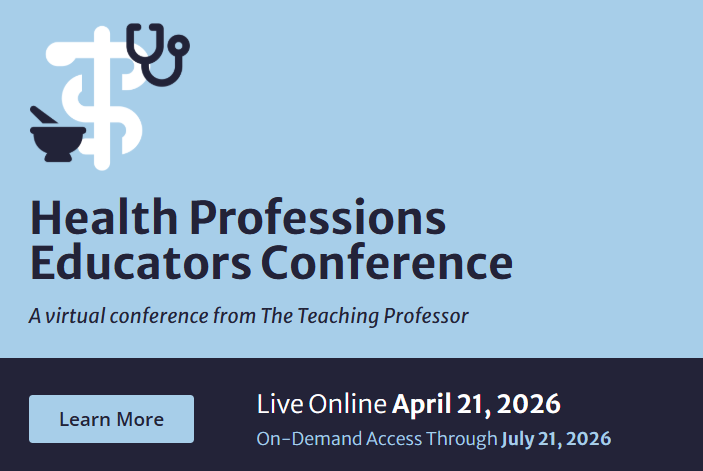As we prepared for the start of fall semester 2024, there was buzz around our campus about administration raising the caps in our condensed 8-week online courses to match the high enrollment caps for our 16 week in person courses. Of course, with the mounting pressure on administration in light of budget shortfalls, lower enrollment and the general panic surrounding the narrative that students (and parents) are finding less value in post-secondary education, it is no surprise that those not teaching in higher education look to increase seats in online classes, rather than increasing the number of faculty to teach high quality online courses. As an educator and instructional designer, I find this problematic. If the focus shifts to quantity over quality, our students will be the ones to lose out, ultimately receiving less educational value for their investment.
It’s important to consider the unique dynamics of each learning environment when discussing whether class caps for online and in-person courses should be the same. Many institutions are looking at increasing the number of online students through a combination of course availability, carousel offering, sequencing, and timing rather than increasing caps in online courses.
It is quite possible to increase the number of seats in a well-designed online class, but for online instructors to build and facilitate student centered courses based on active learning and inclusive pedagogy, there are some important considerations. Given the absence of physical presence, online instructors must rely heavily on digital tools to communicate, facilitate discussions, and assess student progress. Online instructor presence is a key component to student success, retention and feeling supported. With that in mind, here are some best practices and considerations for online pedagogy that may be useful for those at institutions exploring this approach.
The below list is of course, just as important to include for in person classes, but there are additional challenges for online instruction that requires a more concerted effort and time to encourage participation and intervene where necessary to promote student success.
- Research indicates that students are more successful with lower enrollment (30 students) in online courses (Hansen 2024).
- Class size is positively correlated with the amount and quality of interaction between instructors and students (Burch 2019). Smaller online class sizes can help facilitate more meaningful interactions which can work towards building a sense of community and a supportive learning environment.
- This is an important consideration for degree programs which require regular and substantive interaction in order to satisfy financial aid requirements from the Department of Education.
- There is often increased engagement and participation if the class is interactive, and this takes time to monitor and participate in. Research indicates that instructor participation in discussions can be an important component for instructor presence and student engagement (Vinton 2023).
- Research on faculty perceptions suggests that the ideal enrollment for online courses is lower than what they would consider suitable for high-enrollment courses, with course design playing a crucial role. Faculty reported that teaching high-enrollment online courses demands more time and effort compared to other courses, often necessitating personal or professional pedagogical sacrifices. (Lowenthal et asl 2019)
- In person classes allow for real-time communication, non-verbal cues, and spontaneous group activities. This is not possible online, so instructors need to increase communication efforts. Teacher/student interactions in the online environment requires frequent individualized check ins especially in condensed quick moving courses (Ong and Quek 2023).
- Many studies found that online instruction resulted in lower student performance relative to in-person instruction (Joyce, et al 2015, Alpert et al. 2016, Figlio et al 2013).
- Research also indicates that online students get lower grades, are less likely to perform well in follow-on coursework, and are less likely to graduate than similar students taking in-person classes (Huntington 2017, Hoxby 2018, Kreig et al. 2016, Fischer et al. 2021)
- Immediate or timely detailed feedback is especially important in online and condensed courses. Individualized and personalized attention is paramount in online courses, because it is more difficult for instructors to gauge student engagement and understanding. Smaller class sizes can help ensure that each learner gets the attention they need.
- Authentic assessments take time, and we should be focused on quality of courses rather than quantity of students, especially in terms of generative AI availability. Condensed courses require more effort for both instructors and students, it also requires a quicker turnaround time for graded items and feedback.
- Faculty who would like to incorporate higher level learning and critical thinking (Bloom and Fink taxonomies etc.) will require more time in grading rather than having easily gradable multiple-choice assessments (Thomas 2022).
- With fewer students, instructors can more easily track progress and adapt the course based on individual needs. Incorporating flexibility in course design can help with student engagement and motivation.
- Very clear directions and increased time to answer questions and support students is required in the online environment and often requires the creation of just in time resources for students to be successful.
- Retention, early intervention due to the speed of the course, and support are key to student success in online courses. Most faculty identify an ideal enrollment for an online course as lower than what they consider a high-enrollment course
- My own experience teaching large enrollment fully remote (Zoom classes) received high praise from students. They said they liked not having to leave their house for the class, they were able to connect with students from around the state, and our statewide and online students commented that they appreciated the interaction in the class, and ability to work with others in real time. Perhaps with the right course design and pedagogical practice, this innovative teaching pedagogy could be leveraged. There is some early data to show this format could be beneficial for some students (Cacault et al. 2021).
While there might be a temptation to standardize class caps across different delivery modalities for simplicity, the distinct nature of online and in-person learning environments suggests that differentiated class caps might be more effective in ensuring a high-quality educational experience for students in both settings. Before making any decisions, it’s important to review research on faculty responsibilities, burnout, and effective teaching practices at specific educational institutions. Additionally, it’s crucial to adhere to a shared governance model prior to any decisions being made so that faculty and students are part of the decision-making process.
Dr. Samantha Clifford is an instructional designer with Northern Arizona University’s Online Innovative Pedagogies and part time adjunct professor in the Anthropology Department. Dr. Clifford has worked in the areas of faculty professional development, academic student success and in international education. She has over 20 years of experience working with marginalized populations including work with homeless and runaway youth in the US, England, and Australia.
References
Alpert, W., Couch, K, Harmon, O. ( 2016). “A Randomized Assessment of Online Learning.” American Economic Review, 106 (5), 378–82. DOI: 10.1257/aer.p20161057
Burch, B. (2019). Class size in online courses: What the research says. Quality Matters. https://www.qualitymatters.org/qa-resources/resource-center/articles-resources/research-on-class-size
Cacault, P. Hildebrand C., Laurent-Lucchetti, J. Pellizzari, M. (2021) Distance Learning in Higher Education: Evidence from a Randomized Experiment, Journal of the European Economic Association, 19, (4), 2322–2372, https://doi.org/10.1093/jeea/jvaa060
Filglio, D., Rush, M., Yin, L. (2013). Is It Live or Is It Internet? Experimental Estimates of the Effects of Online Instruction on Student Learning. Journal of Labor Economics, 31 (4). https://www.journals.uchicago.edu/doi/abs/10.1086/669930?journalCode=jole
Fischer, C. Baker, R. Li, Q. Orona, G. Warschauer, M. (2021). Increasing success in higher education: The relationships of online course taking with college completion and time-to-degree. EdWorkingPaper: 21-427. Retrieved from Annenberg Institute at Brown University: https://doi.org/10.26300/m9ra-kr67
Hansen, T. (2024). When does online class size matter? read the study. Oregon State Ecampus. https://ecampus.oregonstate.edu/news/online-class-size-research/
Hoxby, C. (2018) Online Postsecondary Education and Labor Productivity. In C. Hulten & V. Ramey (Ed.), Education, Skills, and Technical Change: Implications for Future US GDP Growth (pp. 401-464). Chicago: University of Chicago Press. https://doi.org/10.7208/9780226567945-012
Huntington-Klein, N., Cowan, J. & Goldhaber, D. (2017) Selection into Online Community College Courses and Their Effects on Persistence. Res High Educ 58, 244–269. https://doi.org/10.1007/s11162-016-9425-z
Joyce, T. Crockett, S. Jaeger, D. Altindag, O. O’Connell, S. (2015) Does classroom time matter? Economics of Education Review, V 46, 64-77, ISSN 0272-7757, https://doi.org/10.1016/j.econedurev.2015.02.007.
Krieg, J., Henson S. (2016) The Educational Impact of Online Learning: How Do University Students Perform in Subsequent Courses? Education Finance and Policy. 11 (4): 426–448. doi: https://doi.org/10.1162/EDFP_a_00196
Lowenthal, P. Nyland, R. Jung, E. Dunlap, J. C., & Kepka, J. (2019). Does class size matter? An exploration into faculty perceptions of teaching high-enrollment online courses. American Journal of Distance Education, 33(3), 152-168.
Monks, J., & Schmidt, R. M. (2011). The impact of class size on outcomes in higher education. The BE Journal of Economic Analysis & Policy, 11(1), 1-17.
Ong, S. Quek, G. (2023) Enhancing teacher-student interactions and student online engagement in an online learning environment. Learn Environ Res. 14:1-27. doi: 10.1007/s10984-022-09447-5. Epub ahead of print. PMID: 36685638; PMCID: PMC9839950.
Thomas, R. (2021). 5 considerations for class size in online asynchronous courses. OLC. https://onlinelearningconsortium.org/5-considerations-for-class-size-in-online-asynchronous-courses/#:~:text=Smaller%20courses%20allow%20instructors%20to,et%20al.%2C%202019).
Vinton, D. (2023). Creating a sense of belonging through instructor Social Presence. Faculty Focus Higher Ed Teaching & Learning. https://www.facultyfocus.com/articles/equality-inclusion-and-diversity/creating-a-sense-of-belonging-through-instructor-social-presence/






